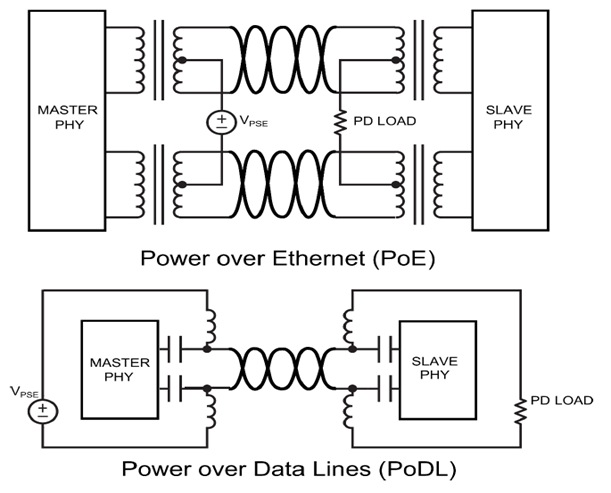About two weeks ago, the IEEE 802.3 working group published a new standard 802.3cg. This is a new variant of Ethernet optimized for fieldbus and low-level vehicle bus applications where the data rates are relatively low but the reliability and immunity requirements are high. The new standard directly competes with traditional fieldbuses such as CAN, EtherCAT, or Modbus, and is intended to displace them from the market. The key idea is that high data rate segments of an industrial or a vehicular network (SOME/IP, DDS) already leverage Ethernet, and it is beneficial from the systems design perspective to converge on the same networking technology across the entire stack.
The new standard currently defines a simple 10 Mbps single-pair architecture, with a possibility of future extension upwards. Both half-duplex and full-duplex modes are defined.
A supremely interesting addition compared to prior Ethernet standards is a deterministic multi-drop topology based on a new media access control policy called PLCA RS which is similar to the token ring. It enables the construction of time-deterministic bus topologies where media access is controlled by a coordinator (instead of the old non-deterministic decentralized CSMA/CD). Although I suspect it might be problematic for some real-time networks due to the inherent fair access policy interfering with prioritization. For reference, existing real-time high-integrity Ethernet-based systems typically rely on switched networks.
A modification of PoE called PoDL (power over data lines) is provided; it enables power delivery over the twisted data pair (not available for multi-drop topologies though):

The standard also includes a connector specification, including heavy-duty IP67 connectors for high-reliability systems operating in adverse environments.
Resources:
- Technology overview (1.2 MB)
- PLCA RS FAQ (351.3 KB)
- Connectors (1.2 MB)